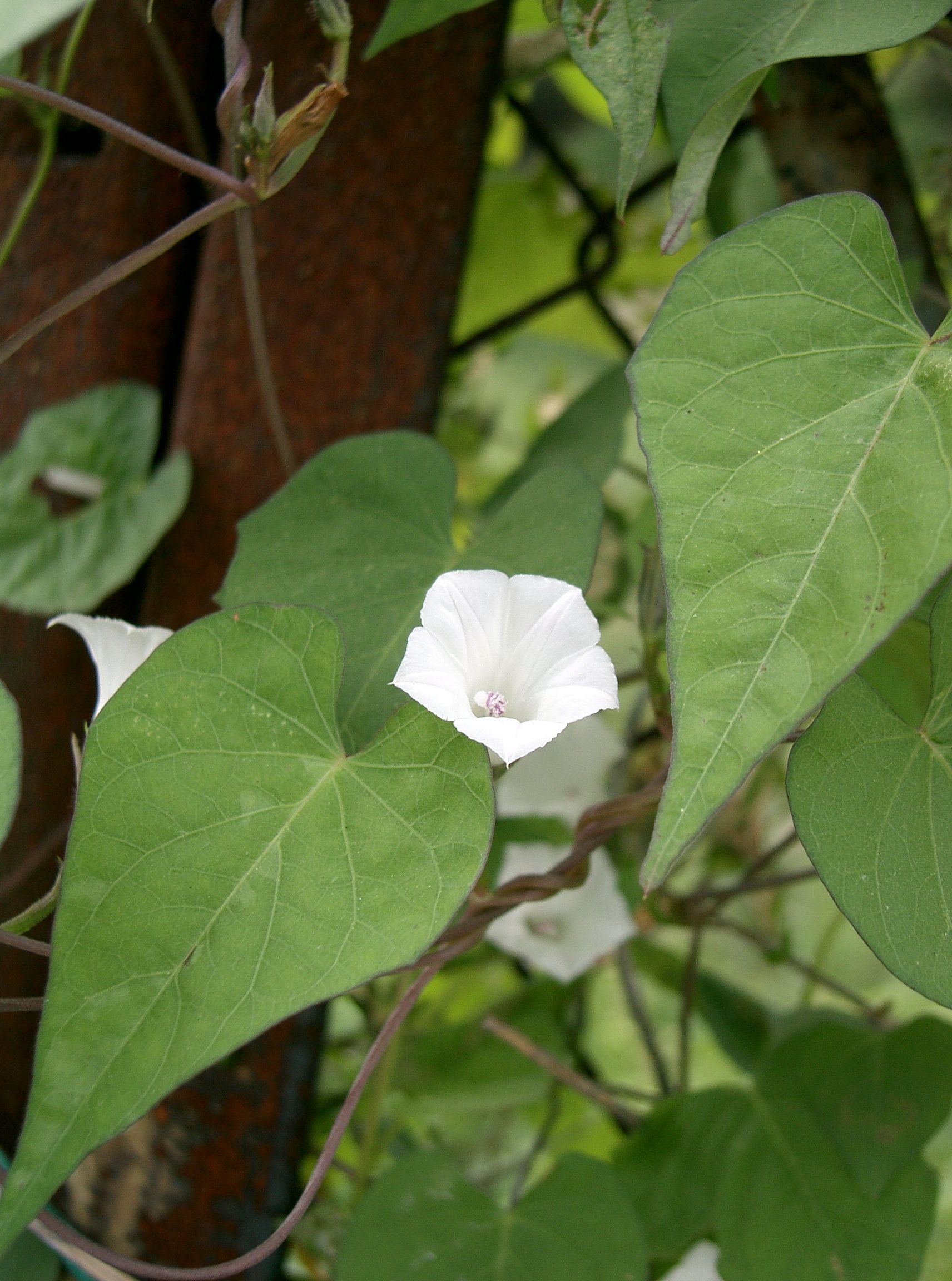
Since Ipomoea lacunosa is a native species to the United States, the plant can be found in multiple areas throughout the country. Ipomoea lacunosa occurs in almost every state on the east coast, as well as some states in the Midwest, and California. The states that the whitestar potato can be found in are as follows: Alabama, Arkansas, California, Washington D.C., Delaware, Florida, Georgia, Iowa, Illinois, Indiana, Kansas, Kentucky, Louisiana, Massachusetts, Maryland, Montana, Mississippi, North Carolina, New Jersey, New York, Ohio, Oklahoma, Pennsylvania, South Carolina, Tennessee, Texas, Virginia, and West Virginia. This species was also introduced to Canada and lives successfully in the province of Ontario. Although this plant grows rapidly, its tendency to be invasive is rather small in comparison to other members of the genus.
The stalks of the plant that bears flowers is rough and usually has 1-3 flowers. The funnel-shaped flowers of the plant are normally white, but on rare occasion the flowers can be light purple or pink. The five petals are joined (sympetalous) or shallowly lobed and are approximately 2.5 cm long. The sepals are light green, lanceolate, take on a leathery texture and can be up to 11.5 mm long. The anthers are a pinkish-purple and the filaments are white. The ovary is superior, cone-like in shape, and green. There is a single white stigma and style. There are five stamen. The flowers have no perceptible or obvious scent. There are large seed capsules in the flower that are spherical in shape and hairy. The seeds themselves are irregularly oblong, shiny, and brown or black.
Fruit is seen in the form of a capsule that is slightly flattened or rounded in shape, it can be up to 10mm wide.
No comments:
Post a Comment